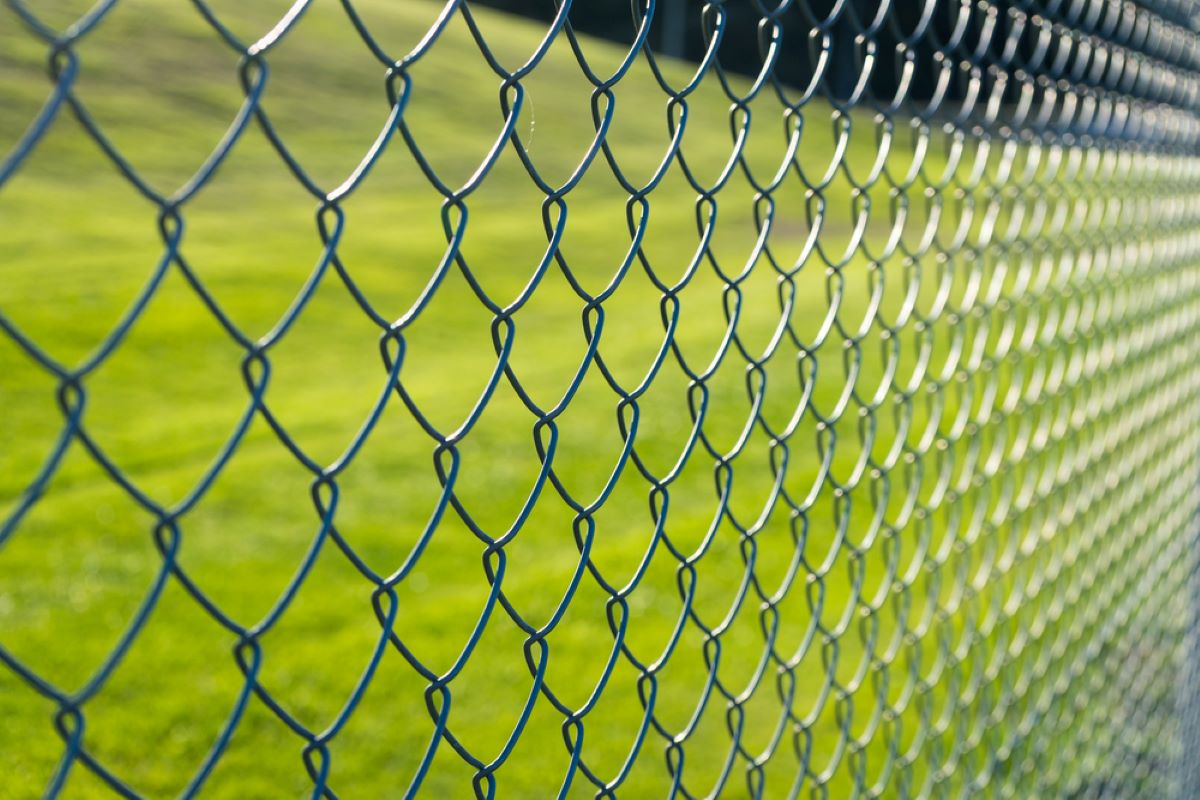

Articles
What Is A Chain Link Fence Made Of
Modified: March 1, 2024
Discover what articles are made of with chain link fences. Learn about the materials used and the benefits of this popular fencing option.
(Many of the links in this article redirect to a specific reviewed product. Your purchase of these products through affiliate links helps to generate commission for Storables.com, at no extra cost. Learn more)
Introduction
A chain link fence is a popular choice for homeowners, businesses, and institutions due to its durability, affordability, and versatility. Whether you are looking to secure your property, keep pets in, or add a boundary to your garden, a chain link fence can be an excellent solution. But have you ever wondered, what is a chain link fence made of?
In this article, we will explore the basic components of a chain link fence and provide you with a comprehensive understanding of the materials used in its construction. From the framework to the fabric, tension wire to fittings and connectors, posts to gates, we will delve into each element to give you a complete picture of what makes up a chain link fence.
So, let’s dive in and discover the building blocks of a chain link fence.
Key Takeaways:
- Chain link fences are composed of durable materials like galvanized steel, providing security, visibility, and longevity. Understanding the components and materials used is essential for informed decision-making during installation and maintenance.
- The framework, fabric, tension wire, fittings, posts, and gates are crucial components of a chain link fence. Each element plays a unique role in creating a sturdy, reliable, and visually appealing structure. Understanding these components is essential for ensuring the longevity and functionality of the fence.
Read more: How To Stretch A Chain Link Fence
The Basic Components of a Chain Link Fence
A chain link fence is composed of several key components that work together to create a sturdy and reliable structure. Understanding these components will help you make informed decisions when installing, repairing, or upgrading your chain link fence.
-
Framework
The framework of a chain link fence forms the skeleton of the structure. It is typically made of galvanized steel, which provides excellent resistance against corrosion and ensures the durability of the fence. The framework consists of posts, top rails, and bottom rails. Posts are the vertical supports that are firmly anchored into the ground. Top rails run horizontally along the top of the fence, while bottom rails provide additional stability at the bottom.
-
Fabric
The fabric, also known as the mesh, is the woven material that makes up the main body of a chain link fence. It consists of interlocking links that create a diamond pattern. The fabric is typically made from galvanized steel wire, which is then coated with a protective layer of zinc. This coating enhances the fence’s resistance to rust and corrosion. The size of the diamond openings can vary depending on the intended use of the fence, with smaller openings providing more security and larger openings allowing better visibility.
-
Tension Wire
Tension wire plays a crucial role in keeping the chain link fence taut and secure. It is usually installed along the bottom of the fence, running parallel to the ground. Tension wire is made of galvanized steel and is stretched tightly between the end posts. This helps prevent the fabric from sagging and adds an extra layer of stability to the fence.
-
Read more: What Greenery Is Good For Chain Link Fences
Fittings and Connectors
Fittings and connectors are essential components that join different parts of the chain link fence together. They include items like tension bands, rail caps, brace bands, and post caps. These fittings are usually made of galvanized steel and ensure a secure and stable connection between the framework, fabric, and other parts of the fence.
-
Posts
Posts are vertical supports that provide stability and strength to the chain link fence. They are typically made of galvanized steel or aluminum and are available in various lengths and thicknesses. The type of post you choose will depend on the height and overall strength required for your fence. Common types of posts include line posts, corner posts, gate posts, and terminal posts.
-
Gates
Gates are the entry and exit points of a chain link fence. They allow for easy access while still maintaining the security of the enclosed area. Chain link fence gates are constructed using similar materials as the rest of the fence. They consist of a frame, fabric, and fittings, along with hinges and a latch. Gates are available in various sizes to accommodate different needs, from pedestrian gates to larger vehicle gates.
Now that you have a solid understanding of the basic components of a chain link fence, you can make informed decisions when it comes to installation, maintenance, and repairs. By choosing high-quality materials and ensuring proper installation, you can enjoy the benefits of a durable and long-lasting chain link fence for years to come.
Framework
The framework of a chain link fence forms the structural support system for the entire fence. It is essential for maintaining the stability and integrity of the fence over time. The framework consists of several key components, including posts, top rails, and bottom rails. Let’s take a closer look at each of these elements:
Posts
Posts are vertical support structures that are firmly anchored into the ground and provide the foundation for the chain link fence. They are typically made of galvanized steel or aluminum to ensure durability and resistance against corrosion. The choice of post material depends on factors such as budget, location, and the desired strength of the fence.
The spacing of the posts depends on the height of the fence and the specific requirements of the installation. Line posts are evenly spaced along the length of the fence, while corner posts are used to change direction. Gate posts are designed to support the weight of the gate, and terminal posts secure the ends of the fence. Proper placement and alignment of the posts are crucial for maintaining the overall stability of the fence.
Top Rails
The top rails run horizontally along the top of the fence and provide additional support and rigidity. They are usually made of galvanized steel or aluminum, similar to the posts. The top rails help to evenly distribute the tension throughout the fence and prevent it from sagging over time.
The number of top rails needed depends on the height of the fence. It is common to use one or two top rails for shorter fences and three or more for taller ones. The top rails are typically attached to the top of the posts using fittings such as rail end cups or rail end bands, ensuring a secure connection.
Bottom Rails
The bottom rails are similar to the top rails but are positioned at the bottom of the fence. They provide additional stability and help prevent the fabric from sagging close to the ground. The bottom rails are also made of galvanized steel or aluminum and are attached to the bottom of the posts using fittings.
The number of bottom rails required depends on the height of the fence and the specific needs of the installation. They are commonly used for taller fences or in areas where additional stability is necessary.
Overall, the framework of a chain link fence is crucial for maintaining its integrity and stability. The posts, top rails, and bottom rails work together to create a solid foundation and ensure that the fabric remains securely attached. By using high-quality materials and proper installation techniques, you can ensure that your chain link fence stands strong for years to come.
Fabric
The fabric, also known as the mesh, is the main body of a chain link fence. It is made up of interlocking steel wires that form a distinctive diamond pattern. The fabric plays a crucial role in providing security, visibility, and durability to the fence.
Read more: How To Cover A Chain Link Fence
Material
The fabric is typically made of galvanized steel wire, which is known for its strength and resistance to rust and corrosion. The steel wire is coated with a layer of zinc, which enhances its durability and extends its lifespan. This galvanized coating protects the steel from environmental elements and helps prevent corrosion, ensuring that the fabric remains intact and functional for a long time.
In addition to galvanized steel, fabric options include vinyl coated or polymer coated wire. These coatings provide an added layer of protection against rust and corrosion and can also enhance the appearance of the fence with different color options. Vinyl coated fabric is available in various colors, allowing you to customize the look of your fence while maintaining its functionality.
Diamond Pattern
The diamond pattern of the chain link fence fabric serves multiple purposes. First and foremost, it provides a strong and secure barrier. The small diamond-shaped openings make it difficult for intruders to climb or pass through the fence, enhancing the security of your property.
Furthermore, the diamond pattern allows for good visibility, allowing you to see through the fence. This can be advantageous for monitoring activities on both sides of the fence, whether it’s your children playing in the yard or your pets roaming around.
Opening Size
The size of the diamond-shaped openings can vary, depending on the intended use of the fence. Smaller openings, such as 1.5 inches or less, provide increased security by preventing small animals or unwanted intruders from squeezing through the fence. On the other hand, larger openings, such as 2 inches or more, allow for better visibility through the fence and can be suitable for applications where security is not the primary concern.
Height and Gauge
The height of the fabric also varies according to the specific requirements of the installation. Chain link fences come in a range of heights, from a few feet for residential applications to several feet or more for commercial or industrial settings.
The gauge of the fabric refers to the thickness of the wire used. The higher the gauge number, the thinner the wire. The gauge of the fabric can influence its strength and durability. Residential chain link fences typically have a lower gauge (thicker wire) to provide added strength, while lighter gauge fabrics are often used for temporary or decorative fences.
By choosing a high-quality fabric and considering factors such as material, diamond pattern, opening size, height, and gauge, you can ensure that your chain link fence is not only secure and functional but also visually appealing. The fabric is a key component that determines the performance and longevity of the fence, so it’s important to make an informed decision based on your specific needs and preferences.
Read more: How To Paint A Chain Link Fence
Tension Wire
Tension wire is an important component of a chain link fence that helps to keep the fabric taut and secure. It is typically installed along the bottom of the fence, parallel to the ground. Tension wire adds an extra layer of stability and prevents the fabric from sagging over time.
Material and Construction
Tension wire is usually made of galvanized steel, which provides excellent strength and resistance against rust and corrosion. It is available in different gauges, with a thicker gauge offering increased durability and tensile strength.
The wire is tightly stretched between the end posts of the fence to create tension. This tension helps to keep the fabric in place and prevents it from sagging or moving due to external forces such as wind or changes in temperature.
Installation
Installing tension wire is a relatively straightforward process. It is typically done during the initial construction or as a retrofit to an existing chain link fence. The tension wire is attached to the end posts by threading it through the specially designed tension bands or wrapping it around the posts using wire ties.
Once attached, the tension wire is pulled tightly, ensuring that it is securely anchored to the end posts. This tension is important to keep the fabric in place and maintain the overall stability of the fence.
Benefits
Tension wire provides several benefits to a chain link fence:
- Prevents Sagging: One of the most significant advantages of tension wire is that it helps prevent sagging of the fabric. By keeping the fabric taut, it maintains the integrity and appearance of the fence.
- Added Stability: The tension wire adds an extra layer of stability to the fence, especially in areas with high wind or other external pressures. It helps to distribute the tension evenly along the fence, reducing the risk of damage or deformation.
- Enhances Security: A securely tensioned chain link fence is more difficult for intruders to manipulate or breach. The tension wire reinforces the structural integrity of the fence, enhancing its security and deterrent capabilities.
- Minimal Maintenance: Once installed, tension wire requires minimal maintenance. Its galvanized steel construction ensures long-lasting performance and resistance to rust and corrosion.
When considering a chain link fence installation, don’t overlook the importance of tension wire. It plays a vital role in ensuring the longevity, stability, and security of the fence. By properly installing tension wire and maintaining proper tension, you can enjoy a durable and reliable chain link fence for years to come.
Read more: How To Fix Chain Link Fence
Fittings and Connectors
Fittings and connectors are essential components of a chain link fence that help to join different parts together and ensure its structural integrity. They play a crucial role in creating a secure and stable fence system. Let’s explore the various fittings and connectors commonly used in chain link fences:
Tension Bands
Tension bands are used to secure the fabric to the framework, ensuring a tight and secure attachment. These bands are typically made of galvanized steel and are placed around the end posts and looped through the fabric. They are then tightened using bolts or nuts to hold the fabric in place and maintain tension.
Rail End Cups or Rail End Bands
Rail end cups or rail end bands are used to connect the top rails and bottom rails to the end posts. They provide a secure and stable connection, preventing the rails from moving or detaching from the posts. These fittings are typically made of galvanized steel and are available in various sizes to accommodate different rail diameters.
Brace Bands
Brace bands are used to connect the top rails or bottom rails to the line posts, providing additional stability and support. They help prevent the rails from sagging or bending. Brace bands are commonly used at corners and ends of the fence, where directional changes or tension adjustments are required. These fittings are also made of galvanized steel and come in different sizes to fit different post diameters.
Read more: How To Cut A Chain Link Fence
Post Caps
Post caps are placed on top of the posts to protect them from water, debris, and general wear and tear. They not only enhance the appearance of the fence but also extend the life of the posts by preventing water from seeping in, which can lead to corrosion. Post caps are available in various styles and materials, including galvanized steel, aluminum, and plastic.
Gates Hinges and Latches
Gates are essential components of a chain link fence, providing access points while maintaining security. Hinges and latches are used to secure and operate the gates. Gate hinges are attached to the gate posts and allow the gate to swing open and closed. They are typically made of galvanized steel or aluminum to withstand the weight of the gate. Gate latches are used to secure the gate in a closed position, preventing unauthorized entry. Various types of latches are available, including gravity latches, padlock latches, and self-closing latches.
Other Miscellaneous fittings
There are several other miscellaneous fittings and accessories that can be used to customize and enhance a chain link fence. These include finials (decorative fittings placed on top of the posts), tension bars (used to add strength and stability to the fabric), and privacy slats (inserted into the fabric to provide privacy and block the view).
Proper selection and installation of fittings and connectors are important for the overall functionality and appearance of a chain link fence. It is crucial to use high-quality fittings made of durable materials to ensure the longevity and stability of the fence system. By investing in reliable fittings and connectors, you can create a chain link fence that is not only secure but also visually appealing.
Posts
Posts are an integral part of a chain link fence, providing stability, support, and structural strength. They serve as the vertical anchors that hold the fence in place. The type and placement of posts play a crucial role in the overall functionality and durability of the fence. Let’s explore the different types of posts used in chain link fences:
Read more: How To Lock A Chain Link Fence Gate
Line Posts
Line posts are the primary vertical supports that are evenly spaced along the length of the fence. They provide stability and help to define the straight sections of the fence. Line posts are typically driven into the ground or secured using post anchors, depending on the installation requirements and soil conditions. These posts are commonly made of galvanized steel or aluminum for durability and resistance to corrosion.
Corner Posts
Corner posts are used to change the direction of the fence at corners or angles. They are reinforced to handle the additional tension and stress caused by the change in direction. Corner posts typically have a larger diameter or are made of heavier gauge material compared to line posts to provide greater strength and stability. The size and thickness of the corner posts depend on the height and tension of the fence.
Gate Posts
Gate posts are designed specifically to support and handle the weight of gates. Gate posts are larger and sturdier than line posts to withstand the additional stress and movement caused by opening and closing the gate. They are typically set deeper into the ground and reinforced with concrete to ensure stability. Gate posts are available in various sizes and materials to match the size and weight of the gate they will support.
Terminal Posts
Terminal posts are the end posts of a chain link fence. They provide stability and serve as the anchor points for the beginning and end of the fence line. Terminal posts should be properly installed and reinforced to handle the tension applied to the entire fence system. These posts are typically larger and heavier compared to line posts, providing extra strength and stability.
Read more: How To Cut A Chain Link Fence
Post Caps
Post caps are placed on top of the posts to protect them from moisture, debris, and general wear. They help prolong the life of the posts by preventing water from seeping in, which can lead to corrosion. Post caps also add a decorative element to the fence, enhancing its appearance.
When installing a chain link fence, it is important to choose the right type and size of posts based on the specific needs of your project. Proper installation, including securely anchoring the posts into the ground or using post anchors, ensures the stability and longevity of the fence. By selecting high-quality posts and properly maintaining them, you can ensure that your chain link fence remains strong and secure for years to come.
Gates
Gates are an essential component of a chain link fence, providing access points while maintaining the security and integrity of the enclosed area. Whether you need a pedestrian gate for easy entry or a larger gate for vehicle access, understanding the different types and considerations for gate installation is crucial. Let’s explore the world of chain link fence gates:
Types of Gates
There are various types of chain link fence gates available to suit different needs:
- Single Swing Gates: These gates open and close like a door, swinging on hinges attached to gate posts. They are commonly used for pedestrian access or smaller areas where a single gate is sufficient.
- Double Swing Gates: Similar to single swing gates, double swing gates consist of two individual gate panels that swing open from the middle. This design is suitable for wider openings, allowing for easy access for vehicles or larger equipment.
- Cantilever Slide Gates: Cantilever slide gates are ideal for wider openings where a swinging gate may not be practical. These gates operate by sliding horizontally along a track, usually suspended above the ground. Cantilever slide gates are a popular choice for commercial and industrial applications.
- Rolling Gates: Rolling gates, also known as rolling chain link gates, consist of a series of interconnected panels that roll on wheels attached to a track. These gates are commonly used in larger openings where space for swing or slide gates may be limited.
Gate Hardware
Gate hardware is an important consideration for ensuring the functionality, security, and longevity of the gates. Some of the key gate hardware components include:
- Hinges: Gate hinges are crucial for allowing the gate to swing open and closed. They are typically made of durable materials such as galvanized steel or aluminum to withstand the weight and movement of the gate. Hinges should be properly installed and adjusted to ensure smooth operation.
- Latches and Locks: Latches and locks are used to secure the gate in a closed position, preventing unauthorized entry. Common types of gate latches include gravity latches, padlock latches, and self-closing latches. The choice of latch depends on the level of security and convenience required.
- Rollers and Track Systems: For sliding or rolling gates, rollers and track systems are essential for smooth and efficient operation. These components allow the gate to move along the designated path without obstruction, ensuring easy access and long-lasting performance.
Read more: How To Build A Chain Link Fence Gate
Considerations for Gate Installation
When installing a chain link fence gate, there are several considerations to keep in mind:
- Size and Weight: The size and weight of the gate should be appropriate for the opening and the level of use. It is essential to select a gate that can withstand the expected traffic and stress without compromising its stability.
- Proper Alignment: Gates should be properly aligned with the fence line and adjacent gate panels to ensure smooth operation. Gate posts should be securely anchored and reinforced to handle the weight and movement of the gate.
- Safety: Gates should be equipped with proper safety features, such as self-closing mechanisms or childproof latches, especially in residential settings where children or pets may be present.
By considering the specific needs of your project, selecting the right type of gate, and using high-quality gate hardware, you can ensure that your chain link fence gates provide secure and convenient access while maintaining the overall integrity of your fence.
Conclusion
Chain link fences are an excellent choice for homeowners, businesses, and institutions due to their durability, affordability, and versatility. Understanding the basic components of a chain link fence is essential for making informed decisions during installation, maintenance, and repairs.
The framework, consisting of posts, top rails, and bottom rails, provides the structural support and stability needed for the fence. Posts anchor the fence into the ground, while top and bottom rails distribute tension and ensure the fabric remains taut.
The fabric, made of galvanized steel wire, forms the main body of the fence. It features a diamond pattern that provides security and visibility. The size of the diamond openings can be tailored to specific needs, while coatings like zinc or vinyl improve durability and aesthetics.
Tension wire is crucial for maintaining the tension and preventing sagging of the fabric. It is installed along the bottom of the fence, parallel to the ground, and adds stability and strength to the overall structure.
Fittings and connectors, such as tension bands, rail end cups, and post caps, ensure a secure and stable connection between the components of the fence. They contribute to the overall functionality, appearance, and longevity of the chain link fence.
Posts provide the vertical support and stability to the fence. Different types of posts, including line posts, corner posts, gate posts, and terminal posts, are used based on the specific requirements of the installation. Proper installation and selection of durable post materials are crucial for ensuring the strength and longevity of the fence.
Gates provide access points while maintaining security within the enclosed area. Understanding the different types of gates and selecting the appropriate gate hardware, such as hinges, latches, and rollers, ensures smooth operation and enhanced security.
In conclusion, a chain link fence is made up of various components that work together to create a durable, secure, and visually appealing structure. By understanding the materials used and considering the specific needs of your project, you can make informed decisions and install a chain link fence that meets your requirements and stands the test of time.
Frequently Asked Questions about What Is A Chain Link Fence Made Of
Was this page helpful?
At Storables.com, we guarantee accurate and reliable information. Our content, validated by Expert Board Contributors, is crafted following stringent Editorial Policies. We're committed to providing you with well-researched, expert-backed insights for all your informational needs.
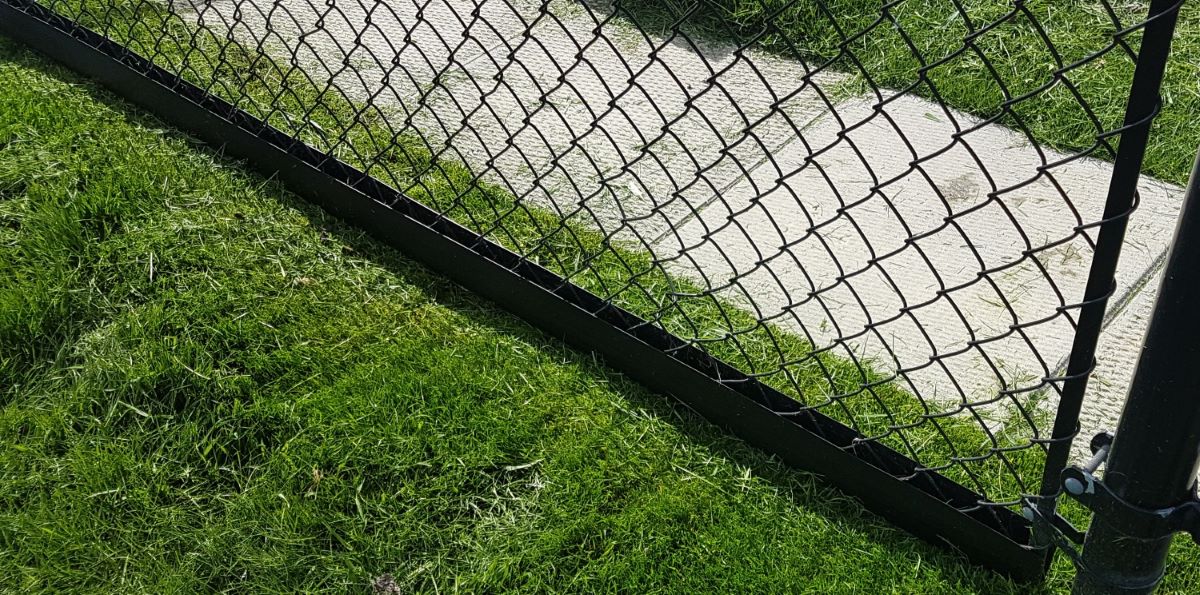
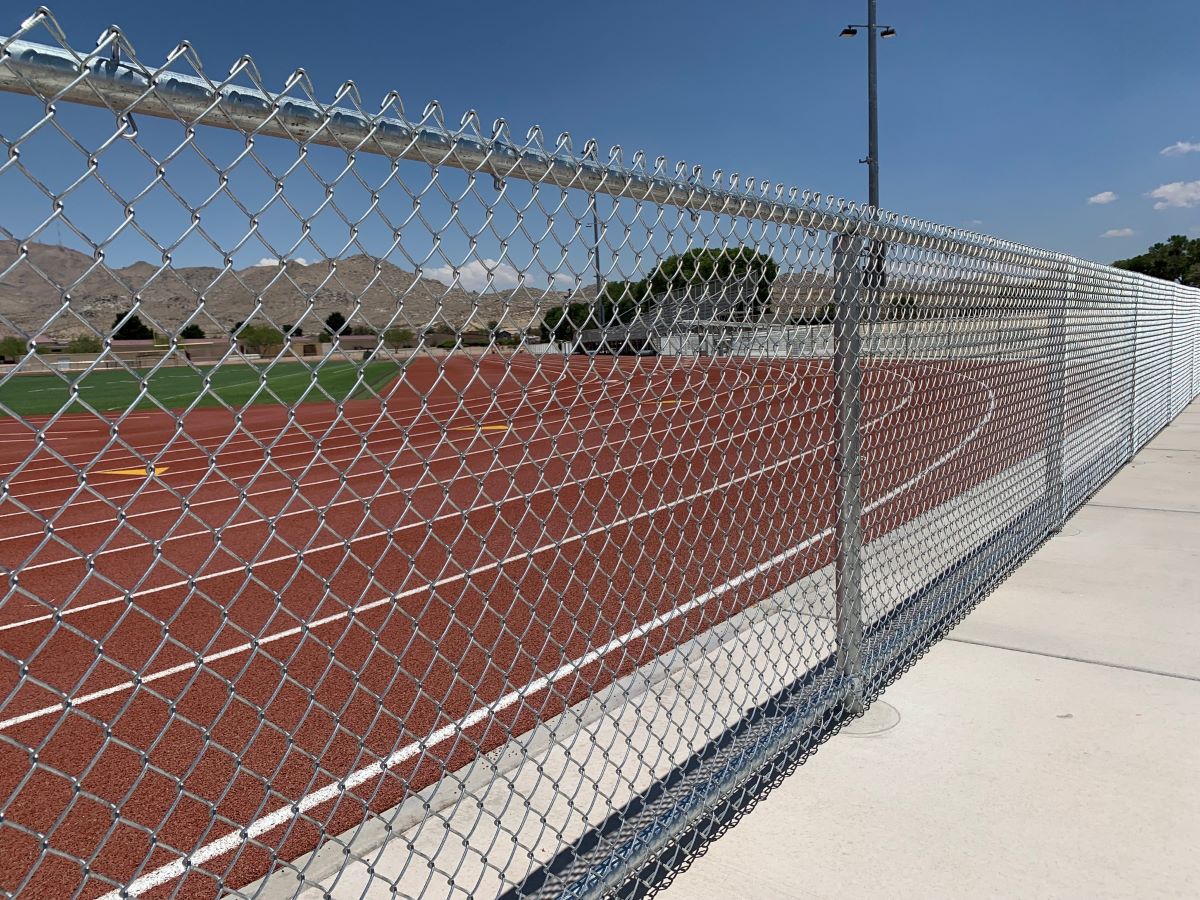
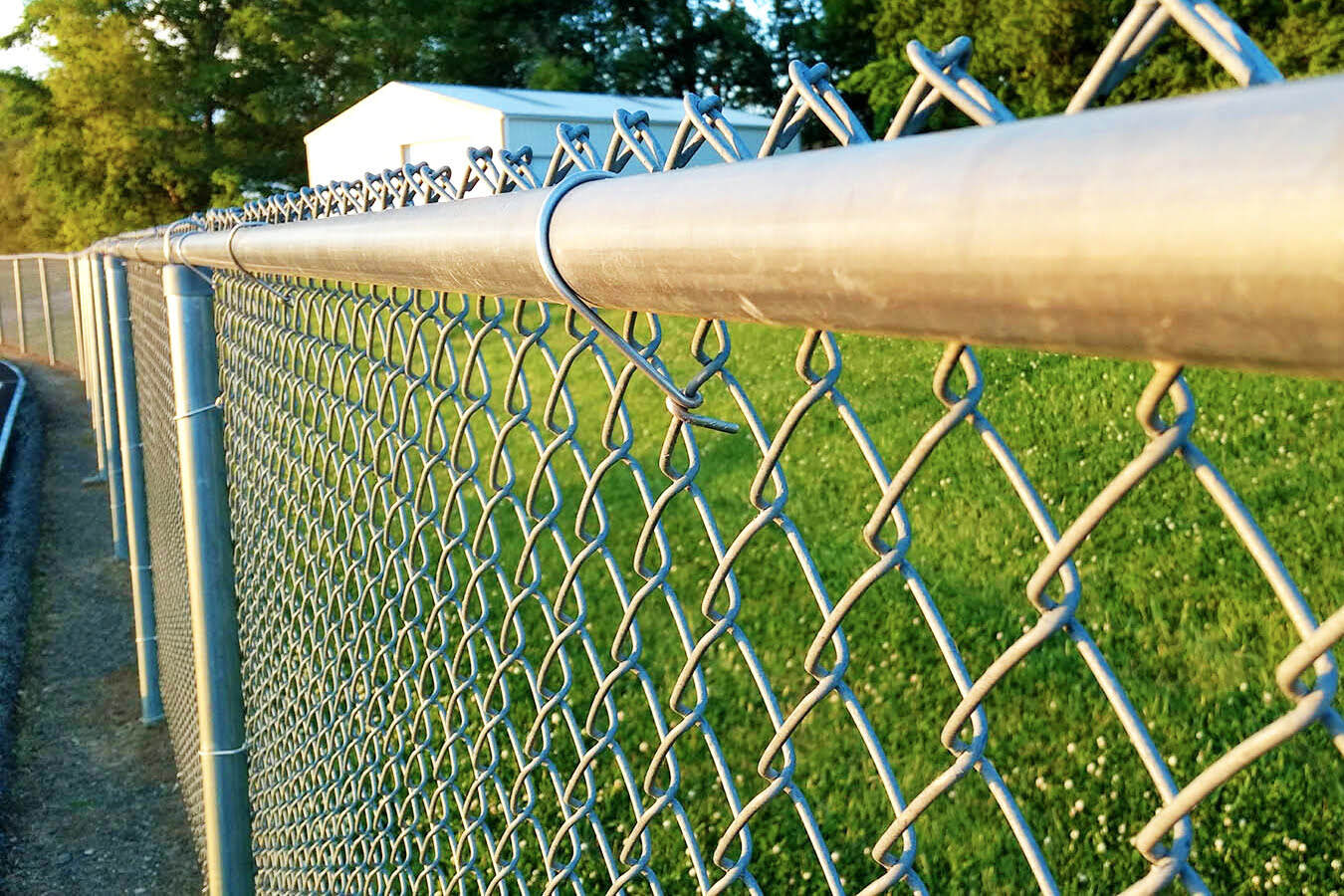
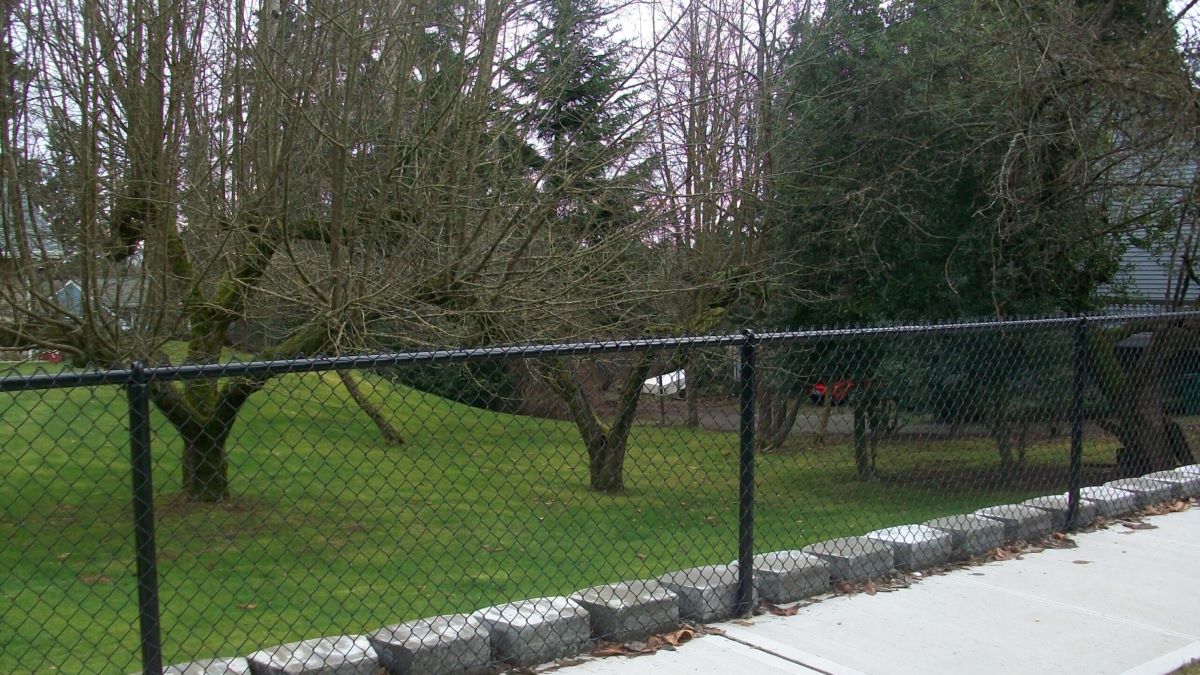
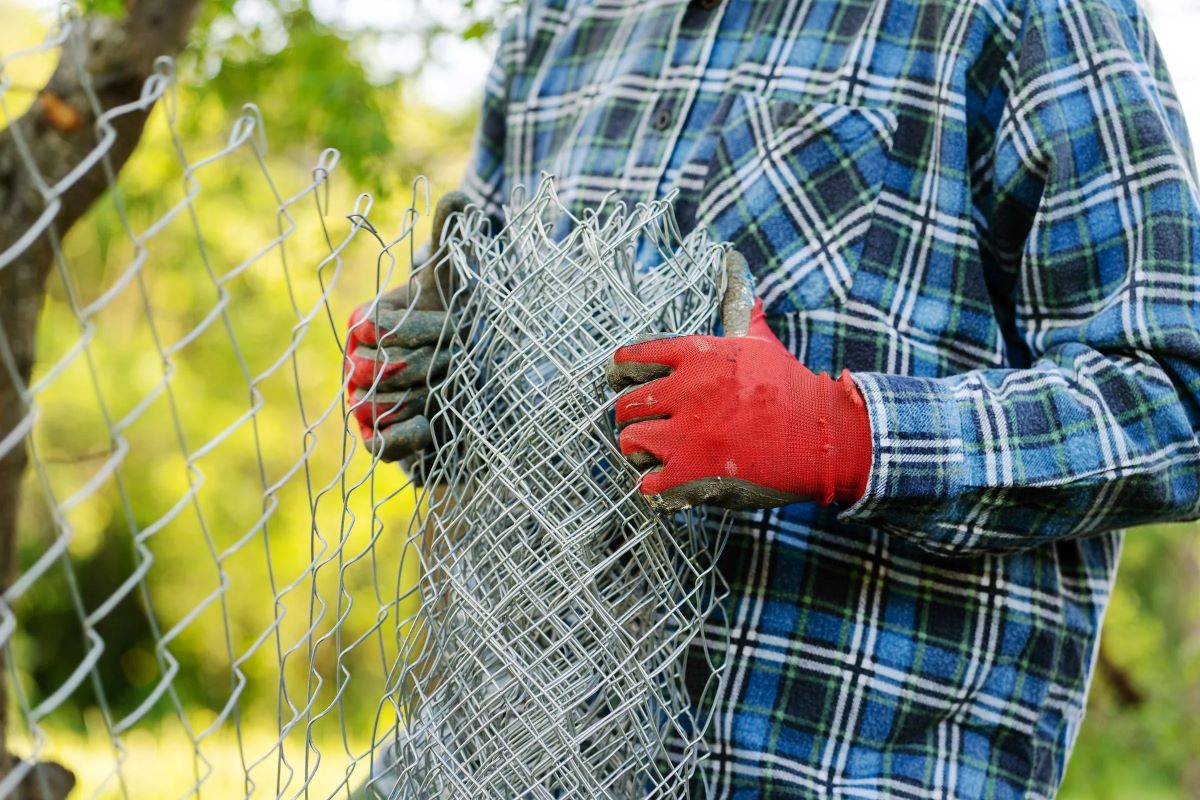
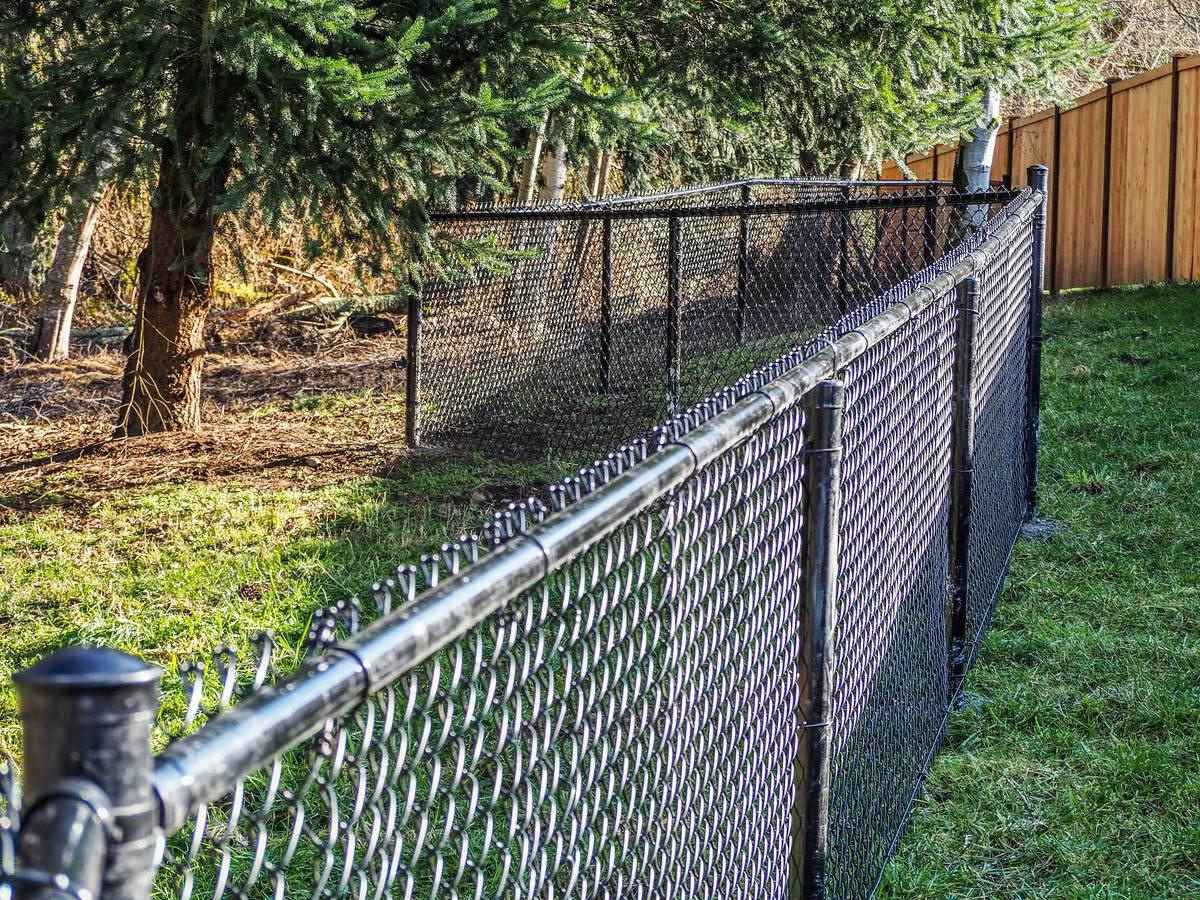

0 thoughts on “What Is A Chain Link Fence Made Of”